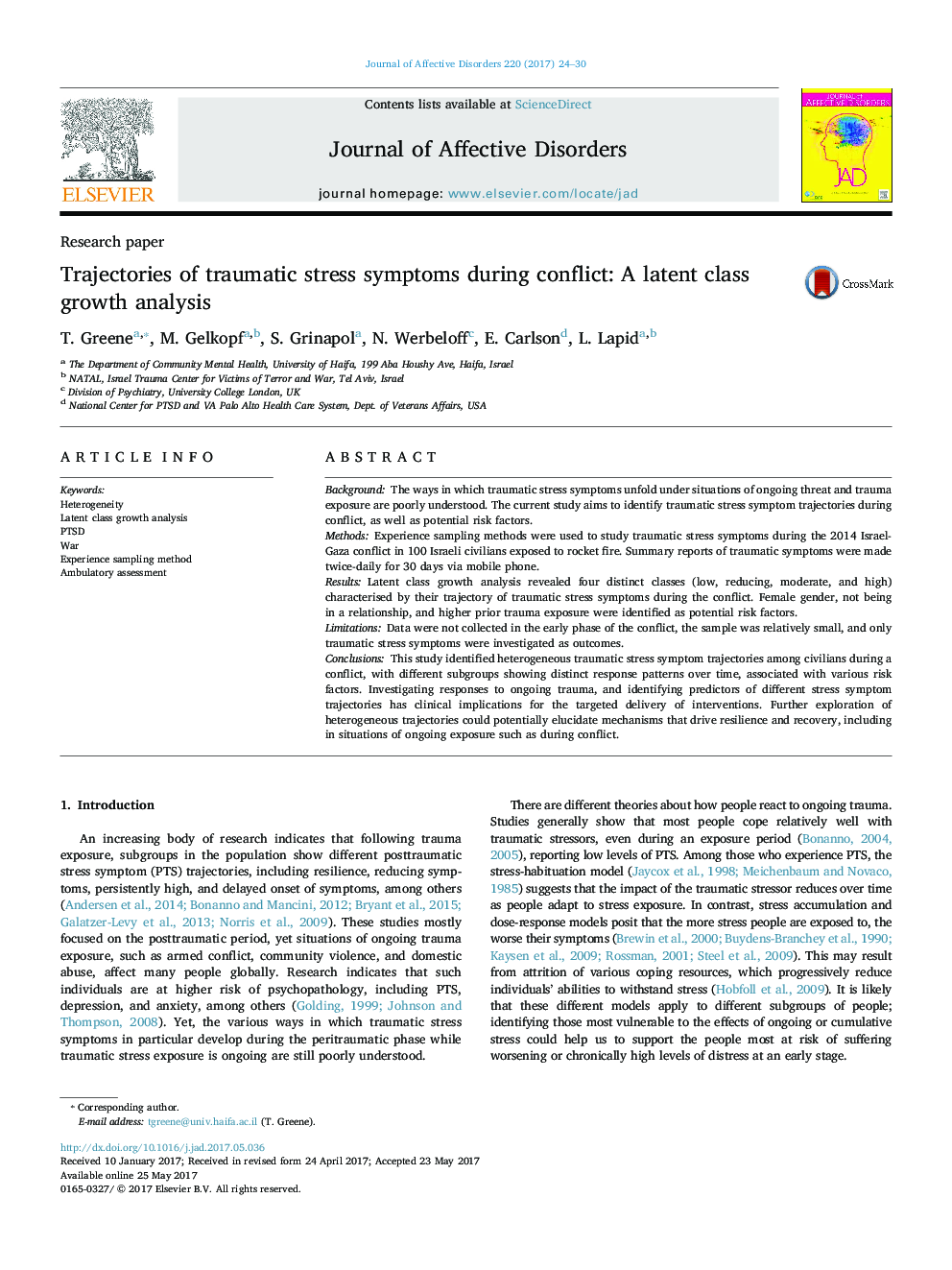| Article ID | Journal | Published Year | Pages | File Type |
|---|---|---|---|---|
| 5722152 | Journal of Affective Disorders | 2017 | 7 Pages |
â¢Experience sampling methods assessed traumatic stress in civilians during conflict.â¢Four traumatic stress symptom trajectories were identified (low, reducing, moderate, and high).â¢Female gender, not being in a relationship, and higher prior trauma exposure were identified as potential risk factors.â¢Exploration of heterogeneous traumatic stress trajectories could elucidate mechanisms for recovery.
BackgroundThe ways in which traumatic stress symptoms unfold under situations of ongoing threat and trauma exposure are poorly understood. The current study aims to identify traumatic stress symptom trajectories during conflict, as well as potential risk factors.MethodsExperience sampling methods were used to study traumatic stress symptoms during the 2014 Israel-Gaza conflict in 100 Israeli civilians exposed to rocket fire. Summary reports of traumatic symptoms were made twice-daily for 30 days via mobile phone.ResultsLatent class growth analysis revealed four distinct classes (low, reducing, moderate, and high) characterised by their trajectory of traumatic stress symptoms during the conflict. Female gender, not being in a relationship, and higher prior trauma exposure were identified as potential risk factors.LimitationsData were not collected in the early phase of the conflict, the sample was relatively small, and only traumatic stress symptoms were investigated as outcomes.ConclusionsThis study identified heterogeneous traumatic stress symptom trajectories among civilians during a conflict, with different subgroups showing distinct response patterns over time, associated with various risk factors. Investigating responses to ongoing trauma, and identifying predictors of different stress symptom trajectories has clinical implications for the targeted delivery of interventions. Further exploration of heterogeneous trajectories could potentially elucidate mechanisms that drive resilience and recovery, including in situations of ongoing exposure such as during conflict.
